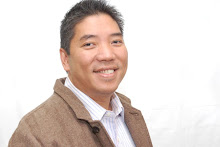By Ambeth Ocampo
Philippine Daily Inquirer
First Posted 02:48:00 11/28/2008
A few months back, I received an intriguing text message from Dr. Michael Cullinane of the University of Wisconsin at Madison, who was researching in the Philippine National Archives in Manila. He teased me silly with a “discovery” that I just had to see. Another researcher had stumbled across a document stating that Andres Bonifacio was apprehended on Sept. 29, 1896, shortly after the outbreak of the Philippine Revolution, and brought to the police detachment in the “tranvia” [streetcar] station of Malabon, now a city outside Manila. I pretended to be excited because I didn’t want to spoil the fun just yet. However, I don’t want to let this “discovery” fool the gullible.
I had come across the same document over a decade ago. It said that “Andres Bonifacio” was carrying a “cedula” [residence tax certificate] with personal number 2492892 (perhaps I should place a bet on this number in this weekend’s lotto draw because Sunday, Nov. 30, is Bonifacio Day). The cedula also stated that “Bonifacio” was a native of Tambobo, a resident of Concepcion and 41 years old. His occupation was listed as “formalero” (whatever that means).
There are a number of ways to read this document, but the common thread is that the man was not the Andres Bonifacio of our textbooks. If the cedula is legitimate then we have “Andres Bonifacio” from Malabon apprehended, interrogated and produced by the authorities for “pogi points,” or brownie points. If the cedula is a fake, then it was probably used by the real Bonifacio to mislead the police and military who were hot on his trail. If the document is a fake, then that explains how Bonifacio was able to hold rallies in various places where he would tear up his cedula to emphasize his freedom from Spanish oppression.
I am sure there are people out there who will disagree and make a mountain out of a molehill with this stray document in the National Archives. We leave them to their imagination.
The real search for Bonifacio has been done, not by a historian of the Revolution, but by a demographic historian: Dr. Dan Doeppers, now retired from the University of Wisconsin at Madison. Doeppers graciously shared his data drawn from the “vecindarios,” or residence lists, of Manila’s Tondo area that he combed for the years covering 1889 to 1894. We all know that Bonifacio is from Tondo, but he is not the Hero of Tondo (the titled is reserved for Raja Soliman). Doeppers’ says that the records do not list any Andres Bonifacio in Tondo during those years. He did find the following:
1. Bernabe Bonifacio, age 36, tailor, married (probable wife Rafaela Uy-Tangco, age 29, “cigarrera,” or cigarette maker).
2. Dionisio Bonifacio, age 26 or 36, married, “carrocero” (probable wife Francisca Hilario, age 35, “cigarrera”). The latter had a son named Telesforo Bonifacio, age 6. In another vecindario entry, the same Dionisio Bonifacio’s age is given as 35 and his occupation is listed as tendero. He is still married in this document to the same Francisca Hilario age 37, “cigarrera,” but now they had two children: Telesforo, age 4, and Marcela, age 3.
3. Geronima Bonifacio, 24, “cigarrera.”
You will be amazed at the amount of useless information that Dr Cullinane has for Cebu and Dr. Doeppers for Manila. I can only hope that there are young Filipino historians who will give up the promise of finding some great historical theory and start solid archival work in the Philippine National Archives or better still the archives in Spain and Mexico. It is unfortunate that the Gen-X is separated from their past because of language. I am told that the Instituto Cervantes, the Spanish cultural center in Manila, has record numbers of students who are probably taking Spanish because they can get paid more than English, or should we say American, speakers in call centers. If only a small number of these Spanish proficient Filipinos can start research work in our archives, our past will become relevant to a new generation.
The material from our National Archives makes us ask the question: If Andres Bonifacio cannot be found in the vecindarios of Tondo, where was he all that time? Was he registered in another suburb of Manila? Maybe he was but a temporary resident of Tondo and was not included in the census count? Maybe the person assigned to collect cedula fees from Bonifacio could not find him or was too scared to present a bill? Perhaps the collector pocketed Bonifacio’s cedula money? Was the collector delinquent, negligent or both?
The bottom line is that Bonifacio cannot be found in the resident lists for Tondo. If he was indeed a bona fide resident, why was he not enrolled for the head tax among the “naturales” in Tondo? If Bonifacio did not pay his taxes, he did not have a cedula. If he didn’t have a cedula, what did he tear up during the famous “Grito de Balintawak,” the Cry of Balintawak, or, depending on the book you’re reading, the Cry of Pugadlawin?
History is a very slippery discipline because there is always more than one way to see an event. Then there is the added complication of sources. Whether there is a lot or nothing, the documentation is almost always problematic. Old questions when addressed often reveal new answers, yet Bonifacio remains one of the heroes we should know more about but cannot, pending better research to find new materials and renewed investigation of the scant material we have on hand.
* * *
Comments are welcome at aocampo@ateneo.edu.
Thursday, December 4, 2008
Subscribe to:
Post Comments (Atom)

No comments:
Post a Comment